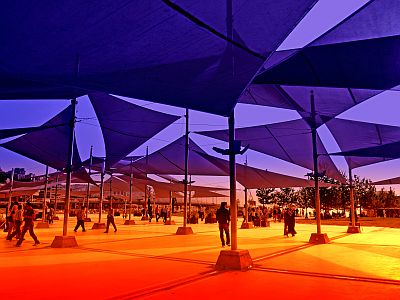A space industry expert explains why the idea of 'placing a huge solar power plant in space and transmitting power to Earth' is unlikely

By
Although solar power generation is touted as clean energy, it requires a large amount of land and its output is dependent on the weather. The idea of 'installing a solar power plant in space and transmitting power to the ground' seems to be excellent because it can generate electricity stably 24 hours a day and can obtain high output without being blocked by the atmosphere, but Henri Bardet, an expert in the space industry, explains why it is unlikely to be realized.
Space-Based Solar Power: A Skeptic's Take - IEEE Spectrum
https://spectrum.ieee.org/space-based-solar-power-2667878868
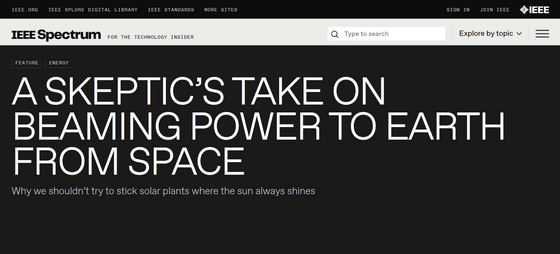
Balde is a space industry expert who worked in space engineering for 27 years at MATRA Espace (now Airbus Defence and Space ) and served as head of the Electrical Power Systems, Electromagnetic Compatibility and Space Environment Division at the European Space Agency from 2007 to 2017.
The idea of 'installing a solar power plant in a place where the sun is always shining' is a very natural idea, and many people have tried to build a solar power plant in geostationary orbit about 36,000 km above the equator. By installing it in space, it can operate stably 24 hours a day except around the vernal and autumnal equinoxes, and it has the advantage of being able to use strong sunlight that is not blocked by the atmosphere on the ground.
Many countries and regions, including Japan's JAXA , China, the United States, and the EU, are conducting research into space solar power generation, and the US Naval Research Laboratory has already succeeded in transmitting over 1kW of power between two ground antennas about 1km apart. The European Space Agency is debuting its space solar power generation program, Solaris, in 2022, and has stated that it will take 10 to 20 years to make space solar power generation feasible and competitive.
In this situation, the realization of space solar power seems close, but according to Balde, 'As the European Space Agency's Space Power Systems Manager, and having worked for more than 30 years on designing power generation, energy storage and electrical systems for dozens of missions, the answer is almost certainly no.'
To generate electricity competitively from geostationary orbit, a space-based solar power plant would need to be hundreds of times larger than the International Space Station and larger than the tallest skyscraper. The engineering and assembly challenges, as well as the transportation of materials, grow with the scale of the facility.
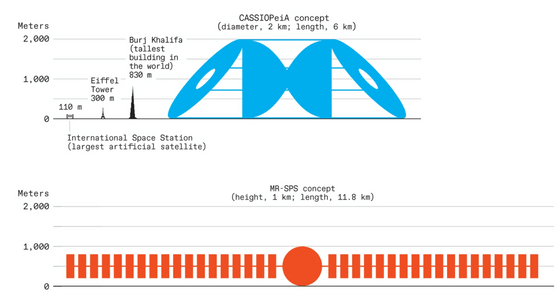
By Chris Philpot
US and EU space agencies have published detailed technical analyses of several proposed space solar power plants:
・SPS-ALPHA Mark-III
Developed by former NASA physicist John C. Mankins, the idea is for a thin-film reflector to track the sun and bounce its light towards an energy-conversion array with photovoltaic panels on one side and microwave antennas and other power distribution and control electronics on the other.
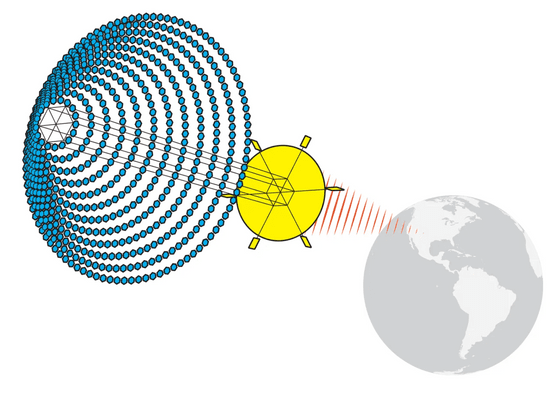
・MR-SPS
The China Academy of Space Technology's proposal consists of 50 solar panels, each 200m wide and 600m long, connected to 128,000 antenna modules via rotating high-power joints and vertical trusses.
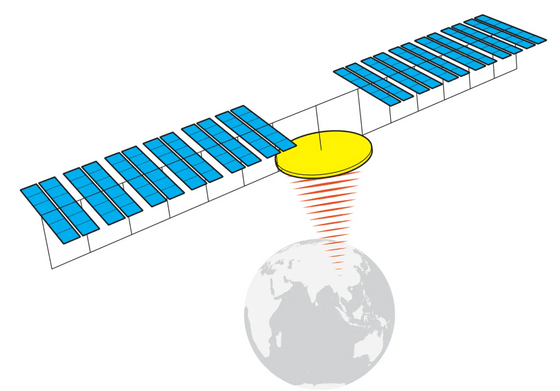
・CASSIOPeiA
Proposed by Ian Cash, chief architect at Space Solar Group Holdings. A circular thin-film reflector tracks the sun, bouncing light towards a spiral array that contains solar collectors and power conversion electronics. The station rotates relative to Earth, transmitting power via synchronized omnidirectional antennas.
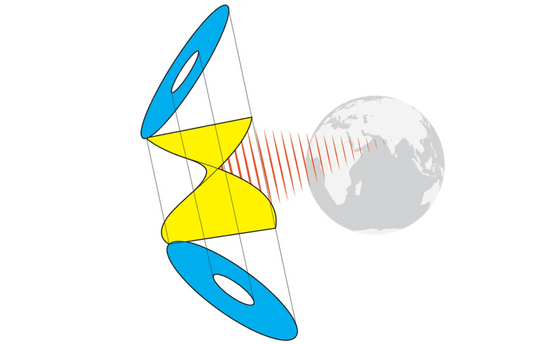
・SPS
Thales Alenia Space's proposal: 8,000 solar arrays, each 10m wide and 80m long, are connected together and controlled to always face the sun. A central transmitter rotates to continuously transmit power to an antenna on the ground.
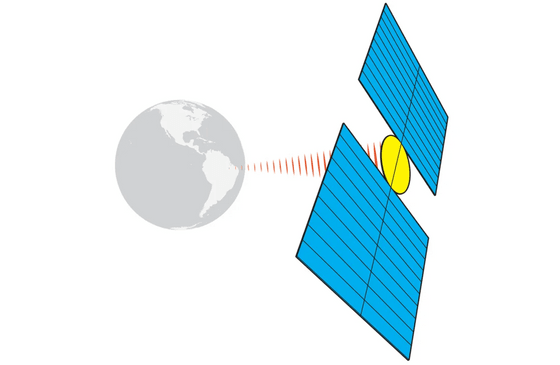
According to a NASA report, either plan would initially be 12 to 80 times more expensive than generating electricity on the ground, and would require $275 billion in capital investment to build the power plant. In addition, a report to the European Space Agency by a British consulting firm ranked 10 of the 13 key elements needed to build a power plant, such as gigawatt-scale microwave beam transmission and the construction of high-rigidity structures at the kilometer level in space, as having a technical difficulty of 'high' or 'very high.'
'The high cost and technical difficulty of space solar power plants are inevitable from a physics perspective,' said Balde. In order to continuously connect a power plant in space to the same point on the ground, it is necessary to build a power plant in
In addition, in order to transmit power without being hindered by any weather and without interfering with important radio systems on the ground, it is necessary to use microwaves of 2.45Ghz or 5.8Ghz within the range used by Wi-Fi. Because diffraction causes the microwave beam to spread by an amount depending on the frequency as it travels, a transmitter with a diameter of at least 750m is required to transmit a 5.8Ghz microwave beam from geostationary orbit to a ground station, and the receiving station will be an ellipse of 34 square kilometers or more. Since the area of Chiyoda Ward in Tokyo is 11.66 square kilometers, an area equivalent to three Chiyoda Wards is required to receive power from one space solar power plant.
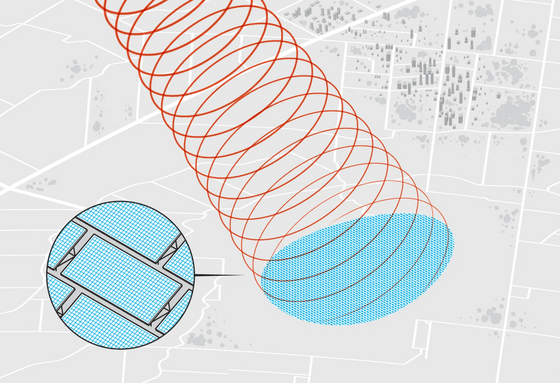
Because space solar power transmitters are large and expensive, space solar power plants want to have as much power output as possible, and NASA, the European Space Agency, China, and Japan are all evaluating proposals for 1GW to 2GW, the maximum scale that power companies can handle. However, to replace one large-scale thermal or nuclear power plant, two or three huge and expensive space solar power plants are needed.
Energy is converted from sunlight to DC power, then converted to microwaves for transmission, converted back to DC power at the receiving station, and converted back to AC for transmission to the grid. At each stage of conversion, energy is lost, so if we use the energy efficiency of 11%, which has actually been verified in field tests, a space solar power plant would have to collect and convert 9 GW of power to transmit 1 GW of power to the ground. Space-use switches, relays, and transformers capable of handling 9 GW of power have not been designed or demonstrated.
In addition, the transmitter uses a mechanism called a phased array, which synchronizes a collection of millions of small antennas to transmit power in a specific direction, but for the phased array to work, the phase of all the antennas on the transmitter must be perfectly synchronized. It is also necessary to develop a mechanism to synchronize the ends of the transmitters, which are nearly 1 km apart, to the nearest picosecond.
While calling the idea of turning to deep space for an inexhaustible supply of electricity a 'beautiful idea,' Baldet concluded his explanation by quoting Laozi's words: 'Faithful words are not beautiful, and beautiful words are not trustworthy.'
Related Posts:
in Science, , Posted by log1d_ts







